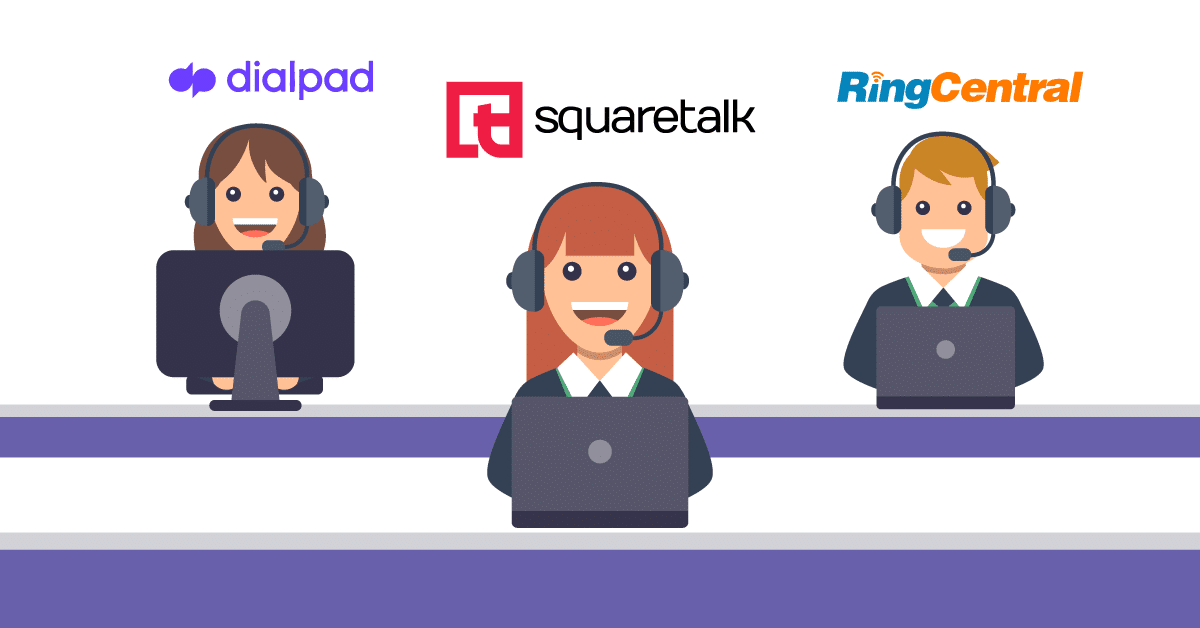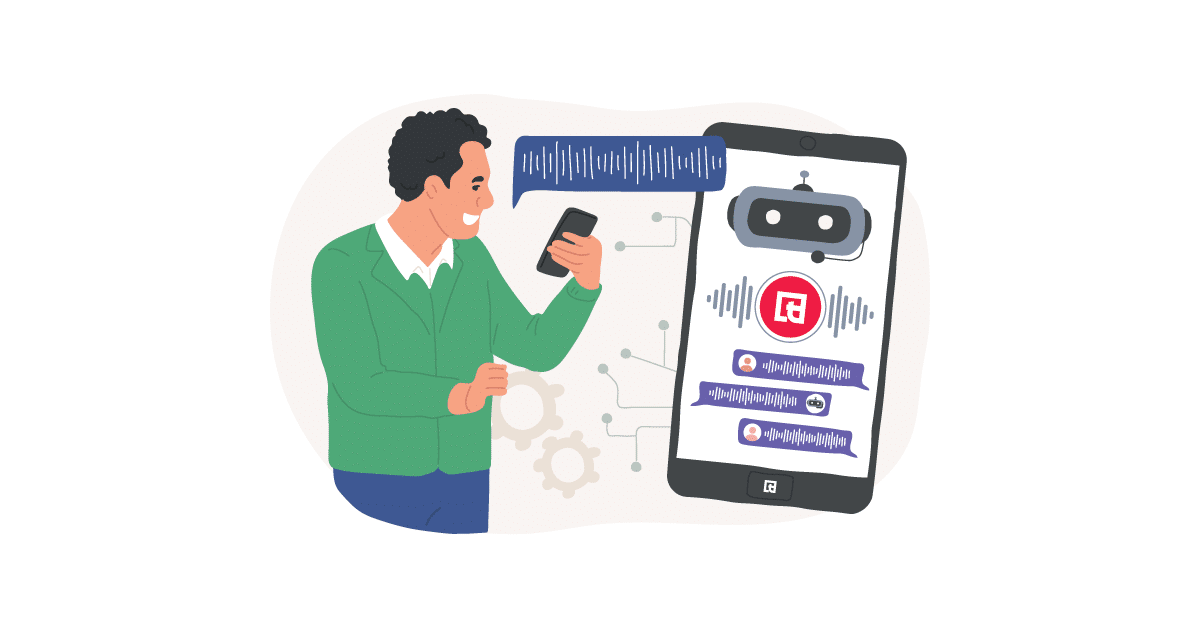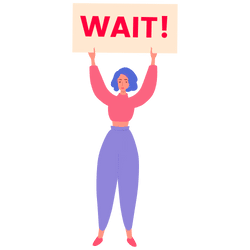If you’re managing sales, understanding when and how to leverage different call types—inbound and outbound—can make or break your business success.
Both call types are essential. They feed leads, nurture prospects, and close deals but each serves a unique purpose and demands a tailored approach.
In this detailed guide, we’ll discuss how inbound and outbound calling can shape your sales strategy. We’ll explore definitions, tools, challenges, and best practices.
Let’s get started.
What Is Outbound Calling?
Outbound calling is when your sales team initiates calls to potential or existing customers. These calls are often proactive, aiming to make new connections, close deals, and expand relationships.
A. Common Uses of Outbound Calls
Outbound calls are categorized into various types, each serving a distinct purpose. Common applications include:
1. Cold Calling
Sales reps reach out to individuals or businesses with no prior relationship. This approach is often used to introduce a product or service. While primarily involving phone-based conversations (hence the term “cold calling”), it also technically includes in-person door-to-door interactions. In contact center cold calling, leveraging data insights, call analytics, and AI-powered dialing solutions can improve efficiency and help sales teams reach decision-makers more effectively.
2. Follow-Up Calls
These are calls to prospects who showed initial interest but did not take the next step. Follow-ups help nurture relationships. They are crucial for closing deals or re-engaging inactive leads. Imagine a prospective buyer who downloaded your whitepaper. A timely call can guide them further down the funnel. Using advanced analytics, you can prioritize leads that are more likely to convert, saving time, optimizing costs, and improving outcomes.
3. Lead Generation
Outbound calls target prospects identified through lead lists or marketing campaigns, where the objective is to qualify them further or schedule appointments.
Outbound calling is also an effective tool in an account-based marketing (ABM) approach. High-value accounts require a personal touch, and a call can open doors that automated emails might leave closed.
4. Appointment Setting
Here, a sales rep’s goal is to book meetings for in-depth discussions or demos. It is often used in B2B markets and transitions the cold call into a scheduled sales pitch.
5. Market Research and Surveys
Companies sometimes use outbound calls to gather feedback. They learn about customer preferences, identify product or service demand, understand market positioning, collect data for trend monitoring and analysis, or recruit participants for research groups.
B. Advantages of Outbound Calling
1. Ability to Target Specific Prospects
Outbound strategies can be highly focused, concentrating on specific industries, geographic locations, job titles, or past interactions. This targeted approach optimizes resource utilization by prioritizing high-potential leads.
2. Direct Control Over Sales Outreach
Your sales team decides who to call and when to call them. This can accelerate lead generation.
C. Challenges Associated With Outbound Calling
Though beneficial, outbound calling comes with several challenges that can impact its effectiveness:
1. High Rejection Rates
Agents frequently encounter rejection, which can negatively impact morale and productivity. Implementing comprehensive training programs on handling objections and fostering a positive team culture can help mitigate these effects.
2. Low Answer Rates
Many outbound calls go unanswered or are directed to voicemail, diminishing the overall effectiveness of calling campaigns. Contributing factors include recipients’ busy schedules and call-screening technologies that filter unsolicited calls.
Scheduling calls during optimal times based on target audience analysis and using Local Caller ID help maximize the chances of recipients picking up.
3. Difficulty Reaching Decision-Makers
Gatekeepers, often administrative assistants or receptionists, can block you from reaching key influencers. Precise targeting, collecting personal phone numbers of decision-makers, and skillful messaging are vital to navigating these barriers.
4. Compliance With Regulations
Laws like Do Not Call (DNC) lists, the Telephone Consumer Protection Act (TCPA), the General Data Protection Regulation (GDPR), and consent rules restrict outbound efforts. Fines for non-compliance can be severe. Always confirm compliance before calling, train your staff, and use consent management tools.
5. Resource-Intensive Operation
Outbound calling requires highly skilled representatives, specialized technology, and effective management. The associated time and labor costs can accumulate significantly. Streamline outbound calling and optimize resources by utilizing automated dialing systems, leveraging Customer Relationship Management (CRM) tools, and providing ongoing efficiency training to your team.
6. Difficulty in Measuring ROI
Measuring ROI in outbound calling is challenging due to the unpredictable length and complexity of sales cycles, the indirect role some types of outcoming calls have on revenue (e.g., scheduling appointments and demos), and the difficulty of calculating all related costs. To overcome this, implement a robust CRM system, use precise analytical tools, and establish clear performance KPIs with related secondary metrics.
D. Tools and Technologies for Outbound Calling
An effective outbound strategy depends on the right tools. These include:
1. CRM Systems
A robust CRM helps store contact details and engagement history. Integrated with your CCaaS software, it lets you track every lead’s journey and offers data insights for better decision-making during conversations.
2. Dialing Systems
Auto dialers automate the dialing process, reducing manual effort and wait times. Predictive dialers adjust dialing speed based on agent availability. According to industry stats, predictive dialers can increase your contact centers’ productivity by 80%.
3. Call Scripts and Templates
Scripts guide conversations and ensure consistent messaging. They help new reps stay confident, reduce errors, and maintain a professional tone.
What Is Inbound Calling?
Inbound calling, a process where potential or existing customers reach out to you, is often triggered by curiosity, need, or interest. People who are actively seeking your brand tend to be more receptive to offers. A well-trained inbound team can turn casual questions into meaningful interactions that further sales.
These calls carry a personal touch that often leads to also higher client satisfaction and loyalty.
A. Common Uses of Inbound Calls in Sales
Inbound calls provide a direct and personal channel for potential and existing customers to engage with your sales team, enhancing opportunities for conversion and fostering stronger customer relationships.
These calls can play a pivotal role in various stages of the sales process, effectively driving growth and customer satisfaction.
Common uses of inbound calls in sales include:
1. Lead Generation and Qualification
Interested prospects might call after seeing an advertisement seeking more information. Skilled agents qualify these leads to determine if they’re ready to buy.
2. Customer Inquiries
People call with product questions or service concerns, like requesting tech specs for a software solution. If an agent can quickly pull up product demos or schedule a personalized consultation, the path to conversion shortens drastically.
3. Support and Service to Sales Transition
A caller seeking support can often help you uncover unmet needs or gaps in their current product. If agents are trained in actively listening and identifying paint points, they can smoothly pivot a service call into a sales opportunity.
4. Order Placements and Tracking
Many people prefer phone orders for clarity and security, especially for high-value deals, bulk purchases, or custom solutions. These inbound calls allow agents to resolve any hesitation and confusion preventing an order and strengthen the emotional connection between your customers and brand.
Once clients experience excellent phone service, they often return for future purchases.
5. Upselling and Cross-Selling Opportunities
During inbound calls, while solving a customer’s problem, an agent can suggest complementary products. This not only addresses the customer’s needs but also boosts revenue without seeming pushy, providing a win-win situation for both the customer and the business.
6. Addressing Customer Objections
Inbound calls provide a platform for potential buyers to voice concerns. Agents can address them instantly, reducing friction and closing sales. This immediate resolution of objections can significantly enhance the customer experience, increase the likelihood of a successful sale, and address potential churns.
7. Retention and Renewals
Existing customers might call about renewals. It’s a perfect time to offer loyalty discounts or product enhancements.
8. Handling Referrals
Happy clients often refer businesses. These inbound calls usually are some of the easiest sales opportunities to close.
9. Marketing Campaign Follow-Ups
Campaigns often prompt calls. Agents can capture essential data and guide callers to a purchase.
B. Advantages of Inbound Calling in Sales
Inbound calling offers significant benefits to the sales process by leveraging customer-initiated interactions to drive meaningful engagements and foster long-term relationships.
These advantages not only enhance sales effectiveness but also contribute to overall customer satisfaction and loyalty.
1. Higher Conversion Rates
Inbound callers already show a genuine interest in your products or services. This predisposition results in higher conversion rates than outbound calling efforts.
2. Enhanced Customer Satisfaction and Loyalty
Customers value prompt and effective responses to their inquiries. Providing quick and helpful assistance fosters positive experiences, enhances customer satisfaction, and cultivates long-term loyalty, leading to repeat purchases.
3. Cost Effectiveness
By focusing on high-intent callers, you can reduce unproductive outreach and lower operational costs. This targeted approach optimizes resource allocation and streamlines the sales funnel.
4. Reduced Sales Resistance
Customers who reach out are already primed for purchase. This alignment fosters smoother conversations and speeds up conversions.
5. Strengthened Marketing and Sales Alignment
Inbound calls offer insights into buyer intent, enabling precise campaign refinements and tighter collaboration between different teams in your organization. A unified customer feedback loop can help you ensure consistent messaging.
C. Challenges Associated With Inbound Calling in Sales
While inbound calling offers significant benefits for sales teams, it also presents unique hurdles that require careful planning to overcome.
Below are some common challenges with inbound calling:
1. Managing Unpredictive Call Volumes
Spikes in incoming call traffic due to marketing campaigns, product launches, or unexpected issues can overwhelm agents. With proper and flexible staffing, you can ensure short wait times and higher customer satisfaction.
2. Unpredictable Caller Intent
You never know why someone is calling until the conversation begins, which can make identifying sales opportunities difficult. Agents need proper tools and training to adapt quickly.
3. Dependency on Agent Skills
The success of an interaction often depends on the agent’s competence in handling inbound sales calls. Training in empathy, active listening, sales techniques, and product knowledge is essential.
4. Limited Caller Information and Context
Agents are frequently provided solely with an incoming phone number when a prospect reaches out, hindering personalization. This limitation can impede the efficiency of customer interactions. A CRM integration and pre-call IVR questions can help you gather key customer data and tailor the interaction.
5. Tracking and Measuring Success
Linking inbound calls directly to revenue can be challenging. However, monitoring specific metrics and implementing a robust CRM can effectively address this issue.
D. Tools and Technologies for Inbound Calling
Below are essential tools and technologies for inbound calling that enhance customer experience and streamline call management.
1. Interactive Voice Response (IVR) Systems
IVRs let callers navigate through automated menus. They route calls to the right department, saving time. They can also help you collect data before transferring a customer to the sales team.
2. Call Routing and Queuing Software
Skill-based call routing ensures callers connect to agents with the right knowledge to spot sales opportunities. It boosts first-call resolution rates.
Meanwhile, queuing software manages call volumes by organizing incoming calls in a virtual waiting room, reducing wait times and ensuring a smooth, efficient experience for every customer.
3. CRM Integration
Inbound calls trigger real-time access to customer data, like past interactions and preferences. This personalization improves the caller experience and can increase conversion rates.
Impact of Inbound vs. Outbound Calls on Sales Performance
Inbound and outbound calls each have unique effects on sales performance. Below are key factors that distinguish the two in terms of lead quality, conversion rates, and cost-effectiveness.
1. Lead Quality and Conversion Rates
Inbound leads are often self-qualified because they actively seek solutions, while outbound leads might be unaware of their own needs. According to a recent statistic, inbound practices produce 54% more leads than traditional outbound practices. Conversion rates between the two calling strategies also vary, with inbound typically being higher.
2. Cost-Effectiveness
Outbound calling can become expensive due to higher staffing requirements and lower answer rates. Inbound calls might be cheaper per lead, but unpredictable volumes can also influence costs.
3. Time Investment and ROI
Both methods require time. The outbound calling approach includes initial research, often multiple efforts to connect, a pitch, typically to people or businesses who are unfamiliar with your product or service, and nurture or follow-ups. Sales agents spend more time identifying prospects and qualifying leads.
Inbound calls in sales, on the other hand, involve interested or ready-to-engage prospects. Agents can focus on specific customer needs and closing the deal rather than on educating a lead about your offer.
Return on investment (ROI) depends on your product, market, advertisement, and team’s skill, but inbound calls typically have a higher chance of conversion due to the warmer leads and lower cost per acquisition.
4. Customer Engagement and Relationship Building
Outbound calls require creating interest from scratch, while inbound calls begin with an engaged customer. If done professionally, both methods can nurture relationships.
Inbound sales calls are focused on problem-solving and conversions, with naturally built trust and a high level of personalization. Relationships are usually stronger because they’re initiated by the customer with clear intent.
Outbound calling needs more effort and overcoming skepticism to establish credibility with the prospect. Personalization here requires research and tailored scripts. Relationships are built slower over multiple touchpoints.
5. Sales Cycle and Velocity
Inbound inquiries often move faster from initial contact to a deal, while outbound leads may need more nurturing, objection handling, and rapport. Each approach can be valuable for different sales stages – incoming calls are particularly successful in converting leads in the awareness, consideration, and decision-making stages, while outgoing calls excel in prospecting, nurturing, and closing deals.
Tips for Crafting Effective Inbound and Outbound Call Strategies
Below are practical strategies to maximize each interaction and foster higher conversion rates.
A. For Improving Outbound Sales Calling
1. Develop Targeted Call Lists
Start with accurate, relevant data. Segment your prospects by your campaign objectives – industry, location, business size, etc., to improve your effectiveness.
2. Create Compelling Scripts
Write short, concise scripts to guide your reps but leave room for customization. Focus on the prospect’s needs. Mention how your solution addresses their specific pain points.
3. Train Sales Teams for Resilience and Adaptability
Rejection is common. Provide role-playing exercises and coaching sessions on how to handle the most common customer objections. Boosting agent confidence leads to better results.
4. Implement Follow-Up Strategies
Few deals close on the first call. Schedule follow-ups, ideally within days or even hours of initial contact, if that’s appropriate.
B. For Improving Inbound Sales Calling
1. Optimize IVR Systems for Better User Experience
Make IVR menus intuitive, keep them short, and offer options to talk to a live agent about sales opportunities. This will reduce frustration and help leads to self-qualify.
2. Train Customer Service Representatives for Upselling
Inbound callers often trust your brand, so train agents to suggest upgrades subtly, with non-pushy language, and build rapport first. Timing is also critical, so avoid interrupting or frustrating customers with unrelated product offers.
3. Ensure Quick Response Times
Speed is crucial in predisposing incoming leads to your brand and offers. More than 83% of customers believe shorter wait times enhance their overall customer experience. Staff accordingly.
4. Utilize CRM Data to Personalize Interactions
Greet customers by name. Pull up their purchase history and preferences on which to base cross-selling and upselling propositions. A personal touch fosters loyalty and trust.
C. For Integrating Technology and Automation
In Outbound Calling:
1. Use AI and Machine Learning to Optimize Call Lists
Leverage predictive lead scoring and propensity modeling techniques to focus resources on the most promising prospects. This targeted approach enhances the efficiency of outbound calling campaigns and significantly boosts ROI.
2. Automate Lead Prioritization and Follow-Up Schedules
Utilize a robust system to automatically set callback reminders, ensuring no leads are overlooked or forgotten. This will guarantee every potential customer receives timely attention, enhancing sales efficiency and increasing conversion chances.
In Inbound Calling:
1. Leverage AI to Analyze Call Patterns and Optimize Resource Allocation
Utilize AI in monitoring call volumes and agent availability. By analyzing historical and real-time data, the system can deploy staff efficiently, reduce cost and wait times, improve the quality of interactions, and increase the likelihood of closing a deal.
2. Implement Chatbots and Virtual Assistants
Bots handle routine queries before escalating to a live agent. They collect initial data and route complex issues and high-value or ready-to-buy customers to the right agent.
Virtual Assistants (VAs), on the other hand, support inbound agents by pre-qualifying leads, scheduling appointments, and managing follow-ups. They also provide agents with real-time talking points, objection-handling tips, and product recommendations based on the conversation.
D. For Maintaining Compliance and Security
In Outbound Calling:
1. Ensure Adherence to Telemarketing Laws and Regulations
Check local, national, and international rules and coordinate your call patterns based on your leads’ time zones. Non-compliance can result in substantial financial penalties and loss of customer trust.
2. Maintain Accurate Records of Interactions
Call recordings help in audits, compliance checks, and training of new staff members.
For Inbound Calling:
1. Safeguard Customer Data with Robust Privacy Protocols
Always encrypt sensitive information, activate role-based access control to customer data, and implement internal safety measures. Trust is built on security.
2. Ensure All Staff Members Handle Sensitive Information Securely
Educating agents thoroughly on data protection principles and best practices is essential. Regular training ensures agents understand the importance of safeguarding sensitive information and adhering to relevant data protection regulations. Additionally, continuous compliance monitoring is crucial to verify that these standards are consistently met.
E. For Continuously Improving Sales Strategies
In Outbound Calling:
1. Refine Lead Scoring and Targeting
Evaluate your lead scoring metrics regularly, adjusting them to reflect new insights and market trends. This ensures your reps focus their efforts on the highest-potential prospects, maximizing the chances of conversion.
2. Personalize Your Approach
Leverage CRM data to customize each pitch. Demonstrating a genuine understanding of a prospect’s situation fosters trust and increases their openness to your offer.
3. Implement AI-Powered Dialers
Adopt AI-driven dialing tools that automate calling and connect agents at optimal times. This helps reduce staff idle time, ensures your team speaks with the right prospects, and significantly boosts sales efficiency.
4. Conduct A/B Testing
Test different scripts, call timings, and opening lines. Focus on what yields better responses.
5. Collect Feedback from Prospects
After each call, record feedback. This helps refine scripts and approaches.
6. Stay Informed About Emerging Trends
Technology changes rapidly. Keep an eye on predictive analytics, voice recognition, and other innovations.
In Inbound Calling:
1. Optimize Different Call Handling Workflows
Experiment with different IVR flows or call routing. Measure wait times, conversion rates, and satisfaction scores to determine the best configurations.
2. Analyze Customer Feedback to Improve Sales
Surveys and reviews pinpoint weak spots in agent skills or processes. Update training materials accordingly and provide actional advice based on call analytics. Regularly review offerings and market trends to identify add-ons that bring genuine value to customers.
3. Minimize Response Time to Improve Conversion Chances
Outbound calls often indicate immediate needs, so quickly responding enhances trust and conversion chances. Ensure adequate staffing levels and efficient call routing to keep wait times minimal.
4. Upsell and Cross-Sell Strategically
Provide agents with well-timed scripts and guidelines that align with the caller’s purchase history.
5. Keep Up with Industry Developments
Watch for new compliance requirements, communication methods, and automation tools.
Transform Your Sales Strategy with Squaretalk's Advanced Call Center Solutions
At Squaretalk, we have dedicated over a decade to perfecting advanced call center solutions. Our platform is meticulously engineered to simplify both inbound and outbound calls, ensuring a seamless experience for your agents and customers.
Squaretalk empowers your team to handle calls efficiently and effectively with:
- Agent-Friendly Interface
- AI predictive dialer
- Seamless Integrations with top CRM systems
- Advanced Reporting and Analytics
- Real-time Monitoring
- Automated Workflows
- IVR systems
- Advanced Call-Routing Features
- Regulatory Compliance and Security
Get a Demo and see how our solutions can transform your inbound and outbound sales calling strategy.
Conclusion
Inbound and outbound calls are both key parts of any well-rounded sales strategy, each offering unique perks for nurturing leads and closing deals. Pairing the strong conversion potential of inbound calls with the wide reach and flexibility of outbound efforts helps you boost conversions and forge stronger customer relationships.
To maximize the effectiveness of your operations, regularly refine your approach through data analysis, call recordings, and dynamic scripts.
Ultimately, staying flexible, embracing new tech, refining processes, and adapting to evolving customer needs will drive sustainable growth and unlock the full power of both inbound and outbound calling.
FAQ
What is the difference between inbound and outbound calling in a sales context?
Inbound means prospects or customers initiate the call (e.g., reaching out for info or support). Outbound means the business proactively calls leads or existing customers. Inbound is often more receptive since the customer already wants something; outbound focuses on outreach and prospecting.
What are the key benefits of integrating both inbound and outbound calls into a sales strategy?
You capture incoming interest immediately while also seeking new opportunities. Inbound calls convert well because the customer is motivated, and outbound helps you expand your pipeline. Used together, they create a balanced approach to growth and customer engagement.
How can outbound calling be effectively utilized for lead generation and meeting scheduling?
Target the right leads, use compelling call scripts, and track key metrics like call-to-meeting ratio. Personalizing the conversation and calling at the right times (based on data) also raises success rates.
What tools and technologies can enhance the efficiency of inbound and outbound calling?
Power and predictive dialers accelerate outbound campaigns; intelligent IVRs route inbound calls quickly; CRMs keep track of interactions; analytics dashboards measure conversion rates. Having these tools integrated streamlines agent workflows.
How can businesses measure the success of their inbound and outbound calling efforts in a sales context?
Track KPIs like conversion rate (calls to sales), call volumes, average handle time, appointment-setting rates, and overall revenue linked to calls. Compare inbound vs. outbound ROI to see which channel yields higher returns and adjust your strategy accordingly.






